Controlling Your Speed For More Fish When Float Fishing
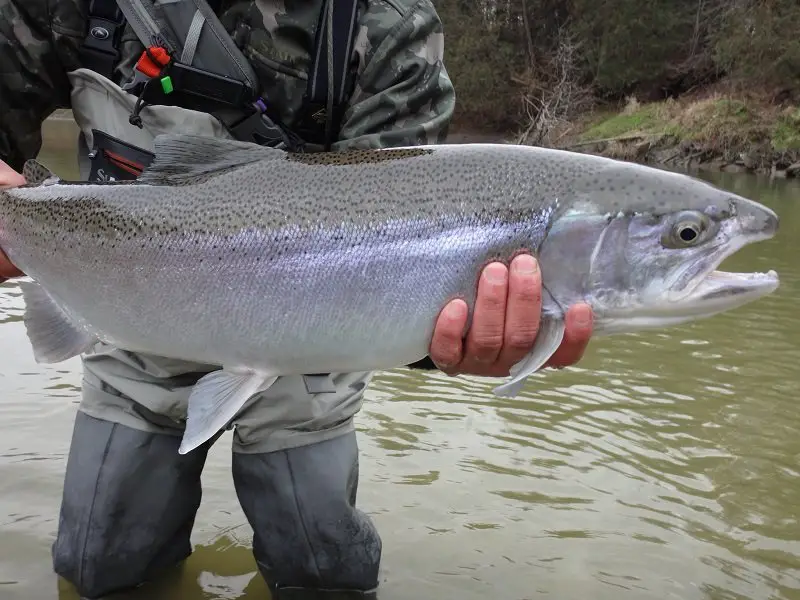
Controlling your speed when float fishing is the number one most critical thing that I teach clients when I’m guiding and during my Centerpin classes. I know this for a fact because after guiding thousands of anglers, I’ve seen the effects of a good presentation versus a bad presentation.
This one easy-to-fix mistake can severely limit how many fish you catch.
I will discuss my methods for controlling the speed of your float and your bait when float fishing for trout, steelhead, and salmon.
Speed control means controlling the speed of your bait so that it drifts through the spot that you are fishing at the most natural speed possible. The same speed as all the other food that the fish are already feeding on. A slower bait also gives the fish more time to see and grab the bait.
The trick to catching more steelhead, trout, and salmon is not to let your bait go too fast or too slow.
Over 20 years of guiding, I have seen hundreds of times when one angler will catch more fish than the angler beside them, even if they are both using identical setups and identical bait.
90% of the time, the reason for this is speed control; however, most guys would think this is just luck.
It doesn’t matter if you are float fishing a roe bag or if you are fly fishing with a fly; if your bait moves too fast or too slow, it looks unnatural to the fish, and most of the fish won’t eat your bait.
Also, be sure to check the comments section at the bottom of the page, where I answer some questions that might clear things up for you.
How Much Of A Difference Does Speed Really Make?
I have probably watched thousands of floats drop down due to a fish biting, and I’ve seen thousands of floats drifting down the river both the right way and the wrong way.
I’ve seen guys fish so poorly that one day I watched two of my clients catch only two steelhead with me on a guide trip when three other guys who were friends of mine hooked and landed about 75 steelhead just downriver from us.
The truth is that these three guys simply fished well, and my clients fished poorly despite my best efforts to try and get them to slow their baits down.
I’ve even had clients fish a spot for over 30 minutes and catch nothing, and when they sit down to have their lunch, I’ll grab their rod to fish myself. I have hooked up to 7 steelhead in a row before they are ready to fish again.
I sometimes do this just to emphasize to them how important it is to control their drifts and their speed, or they will keep catching nothing. As well as to show them the difference between fishing well and not fishing well enough.
Every time I watch someone catch a lot more fish than someone else, it’s primarily because of speed control and partially about covering the water and bait choices.
For information about covering the water effectively, check out my page Effectively Covering The Water When Float Fishing.
Does The Bait Make A Difference
Most guys think that the key to catching more fish when float fishing is having the right bait, but I strongly disagree.
Speed control when float fishing will make your bait work even better.
The reason I say this is that when I am guiding two clients and one guy catches all the fish, even though they both have the same bait on, it’s clear that it’s not the bait; it’s something that they are doing.
After careful observations, I often see one angler’s float moving slower than the other angler’s float, and the slower float always catches more fish, sometimes 10 to 1. I have seen this hundreds of times.
I also know that a great bait fished poorly will catch few fish because I see that happen over and over again with my clients. I’d even bet a lot of money on that one.
However, fishing a great bait, managing your speed, getting your bait down, having the right setup, and then covering the water well will ensure you are that one guy in the pool catching ten fish when everyone else around you is catching only one or two.
My four fundamentals of great float fishing are covering the water, depth control, speed control, and using the right setup.
The bait is not one of those four fundamentals because if you get one or two of the other fundamentals wrong, even the best bait in the world won’t work very well. You can see more about these four fundamentals of float fishing on my page, Centerpin Fishing For Beginners: 20 Steps From A Top Guide.
What Is Trotting Your Float?
Now that you know that speed control is so important and that the bait is not really that important, let’s talk about how to do it.
The key to managing your speed is learning how to do trotting.
You might be asking yourself what trotting is. The simple answer is that trotting is the action of slightly holding your float back just enough to let your bait go ahead of your float. I will explain more about that below.
Some guys might also call holding your float back “checking your float”.
What Is Checking Your Float?
Checking your float is also when you hold your float back to allow your bait to go down the river first. It’s really just another term for trotting your float. Checking your float could also be pulling your float back to make sure that you don’t have slack in the line and that the line goes straight and directly to your float with no S-bends.
Keeping your line straight does a few things, including giving you better float control and a better hook set.
I have asked hundreds of anglers why they trot their floats or why they hold their float back, and about 95 out of 100 will tell me they need to hold the float back because they think that it presents the bait first to the fish before the leader, before the split shots, and before the float, all of which they think can spook the fish.
Do you know what else can spook fish? A bait going past the fish four times faster than it should!
In fact, some guys trot so much that the bait is sometimes 5 to 10 feet ahead of the float so they can be sure the bait goes first, and the fish sees nothing but the bait. If they only knew how bad that type of presentation was and how many fish they were missing, they would stop immediately! DO NOT DO THIS! I will explain why holding your bait back too much is such a bad thing below.
The bait going ahead of the float is a good side effect of holding the float back, but it’s not the important reason you should do it. The real benefit of slowing your float’s speed when fishing or trotting is to match the speed of the bottom current.
What most anglers don’t realize is that the bottom current is almost always slower than the surface current, sometimes over 90% slower. This is a proven fact!
The rocks along the bottom create friction, and that slows the current down near the bottom where the fish hold and feed. This means that the surface current might be flowing at 6 to 8 miles per hour on the surface, but down near the bottom, the current might be flowing at 2 or 3mph.
Why Does That Matter When Float Fishing?
It matters because if all the food that the fish have been feeding on down at the bottom and all the small chunks of debris is moving at three miles per hour in the slower current, but your float is being pulled along by the upper current at eight mph, that means your bait is also moving at eight mph and your bait will stand out like a sore thumb, in a bad way!
If you don’t hold your float back just a little, your bait is likely going to be moving at an unusually fast speed, and many trout and steelhead will pick up on the fact that something is wrong with that bait, and they will ignore it.
I tell guys all the time that trout and steelhead are not smart. They’re just cautious about things that are unusual in their environment.
The bait might also be moving so fast that it zips by them before they can even react to it because they are not used to stuff moving at double the speed. Only the really aggressive fish will hit a bait that is moving two or three times faster than all the debris and food that they feed on every single day.
If you hold your float back properly, you can match the speed at the bottom, which will significantly improve your catch rate, sometimes by ten times or more.
How To Control Your Speed When Float Fishing
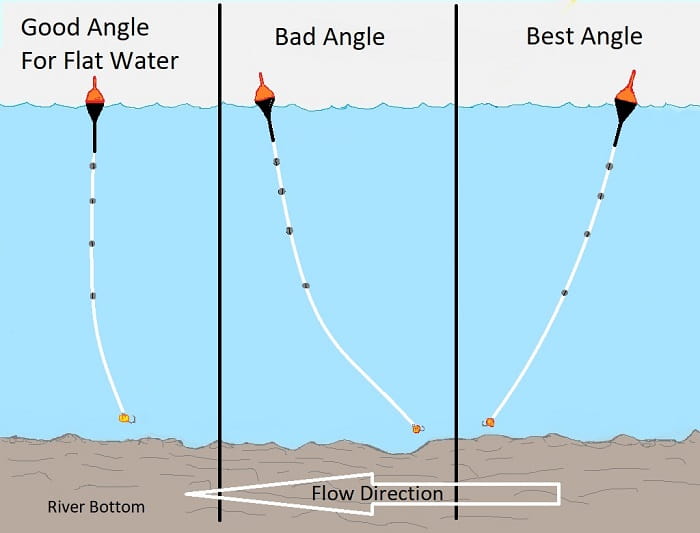
To trot your float properly, you need to hold your float back on a slight angle so the point of your float is pointing more upriver than it is vertically straight up and down or pointing downriver.
In moving current, 95% of the time, if you do not hold your float back, it will point downriver. This is because the faster surface current is dragging your bait down the river, and your bait acts like a little parachute that tilts your float so it points downriver.
If you hold your float back at the right angle, you can match the speed of the lower current better.
If the bottom speed gets faster, you will see your float wanting to tilt upriver towards you as the bottom current is pulling the bait faster and out from under your float. If this happens, you simply take some of the pressure off the float and get it back to the correct angle.
If your float keeps getting tilted downriver, you are either dragging the bottom or you are not holding your float back enough to match the bottom current speed; both of these are problems that will prevent you from catching fish.
On a Centerpin reel, we use the rim of the reel with feather-light touches to slow the float down as it drifts down the river. With a spinning reel, I will feed the line between two fingers to try to get a steady float speed.
The Centerpin reel is superior when it comes to line control and speed control, which is why it is common for the Centerpin anglers to catch far more fish than everyone else. If you are unfamiliar with Centerpin fishing, I suggest you check out my page Centerpin Fishing For Steelhead: 13 Tips From An Expert Guide.
When controlling your speed, do not hold the float back with your rod tip. Instead, use your Centerpin reel or your fingers on the line instead.
Every time your float starts to stand up straight or vertical, touch the spool of the Centerpin reel or hold the line on the spinning reel to slow or stop the float until it tilts to the correct angle again.
Anglers who do this well will never let their float tilt downriver and will correct the angle of their float before it tilts downriver.
The caveat to this is that if you fish in slow flat water, the surface current is much slower and matches the bottom current better, so you don’t need to slow your float down; you simply just let it go. You can see the angle I recommend above.
Using The Bubbles To Determine Speed
A reader just asked about using the speed of the bubble as a way to determine the speed, which is a great question since I have heard many anglers reference the speed of the bubbles, see my response below.
To answer your question, unless you are fishing flat slow water, the bubbles are a poor indicator of the bottom speed. However, I tell my clients that if the bubbles are passing their float, that is a good thing, at least it’s better than their float going faster than the bubbles or at the same speed of the bubbles which are both a bad thing.
Unfortunately, just because the bubbles are passing your float, it doesn’t tell you if your bait or float are still going too fast or too slow, Therefore, you should not use the bubble speed.
Flat slow water might have an even speed from the top to the bottom of the water column, however, bubbles in faster water are often much faster than the bottom current, sometimes 80% faster but you can’t tell how much faster the top current actually is.
The method that I have found to be the most effective to determine the bottom speed and how fast you should be running your float and you bait is the angle of your float. If the current at the bottom increases in speed it will pull the bait forward and that will tilt your float back on more of an upward angle.
If the current slows down the float will want to tilt straight up more in which case you can add more pressure holding the float back which will slow your bait speed.
As a rule of thumb, I would prefer to be too slow than too fast and based on years of experience the slower bait usually get hit the most.
Why Over Trotting Is Bad
Over trotting is basically when you hold your float back too much, and this is a problem.
Anglers will do this because they think that it slows the bait down, which it does, and that it puts the bait way out in front of the float and weights so that the fish won’t see the leader, the weights, or the float, which it also does. They think this is a good thing, but I will explain why it’s not and why I never, ever, excessively over-trot my float!
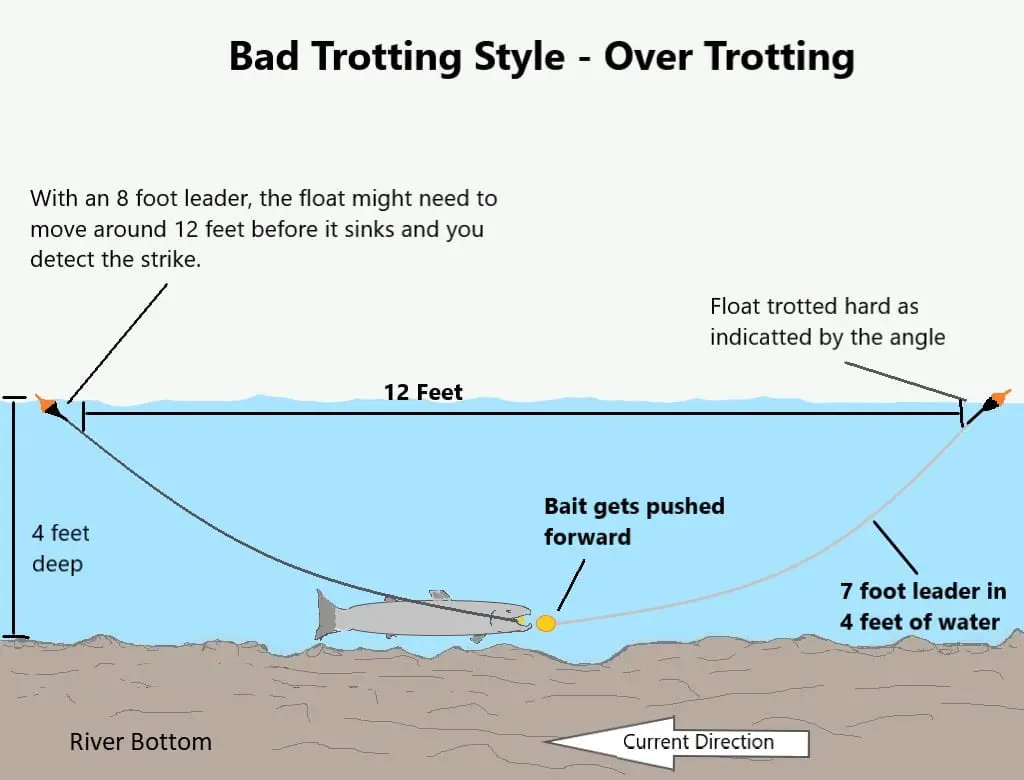
Over-trotting has two negatives that will prevent you from catching fish.
The first problem is that if you over-trot too much, it lifts your bait up too high and out of the strike zone, so you end up missing a lot of fish.
To compensate for this lifting of the bait effect when holding your float back, some anglers will increase the leader length a lot just to make sure they have a long enough leader to keep their bait down. You may see guys running an 8-foot leader in 4 feet of water.
The problem with this is that their bait might be 4 to 6 feet ahead of the float, and if a fish grabs the bait, the float will not go down, indicating a strike until it has drifted past the fish and the line tightens.
With an 8-foot leader, this means the float might need to travel 8 to 12 feet, which means the bait could be in the fish’s mouth for over ten seconds before the float actually goes down and indicates a bite. The chances of a fish holding onto your bait for that long are less than 1 in 10.
Once the fish grabs the bait, if it feels the hook or it feels the line, or it realizes that this is not an edible item, they will try to spit it out. Underwater video shows that trout pick up all kinds of stuff that is not food, and they spit it out within seconds. They are good at determining what’s edible and what’s not.
If you are using real eggs or a real worm, they might hold onto it a bit longer, which is something that I discuss in my article on fishing with eggs and why I say fish eggs are one of the best baits for beginner anglers.
However, any artificial bait like a bead, a plastic bait, or a fly that goes into the fish’s mouth will be determined quickly that it’s not real or edible, and they will want to spit it out within a second or two.
Without getting into details and stories, I will just say I have witnessed many times anglers trotting and me seeing the fish down deep in the water shaking their heads to trying to get the anglers bait out of their mouths, yet the anglers float has not moved, and they are unaware they even have a fish on until I yell “set the hook.”
Over-trotting is risky, and I do not recommend it.
The Side Drift Problem
It’s important to fish each pool in lanes or straight lines. You can see how I do this on my page, Covering The Water Effectively When Float Fishing. Your float should be running in the same direction as the bubbles, and it should not be running sideways when you trot.
However, a common problem of holding your float back, especially in bigger pools or long drifts, and especially the further across the pool you go is that the float will tend to drag on a slight angle towards you, which is not what you want.
This is a common issue, and unfortunately, without taking off all the pressure on your float and allowing it to drift freely and as fast as it wants, it’s hard to stop the side drift problem.
If this is happening to you, some things you can try are:
- Get further out into the river – The more straight up you are from your float, the less side drift you will have.
- Hold your rod tip further out when drifting – The closer your tip is to the float, the less side drag.
- Use a longer rod for more reach.
- Ensure you are not applying too much pressure or pulling on the float at a sideways angle.
- Use a bigger float with more weights and sink your float deeper with the weights – The deeper your float, the less it will move sideways
- Use a wide-body and long body float – The more width and length of float you have under the water, the less it will pull sideways. Thinner floats slice through the water more easily, while a fat float won’t move as easily and will get pulled less.
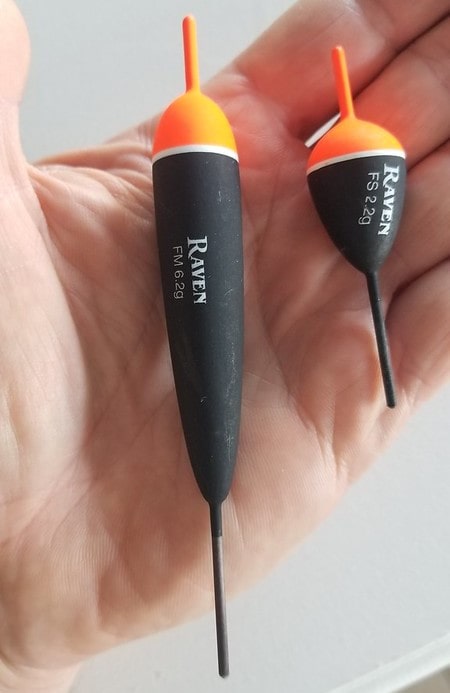
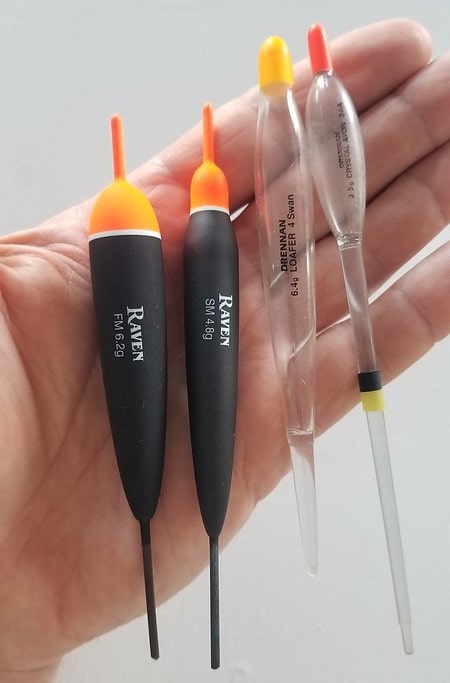
Even when you do it all right, your float could still track sideways. There are other things that I do to get straighter drifts, which I discuss on my page HOW TO COVER THE WATER BETTER.
Tight Lines,
Graham

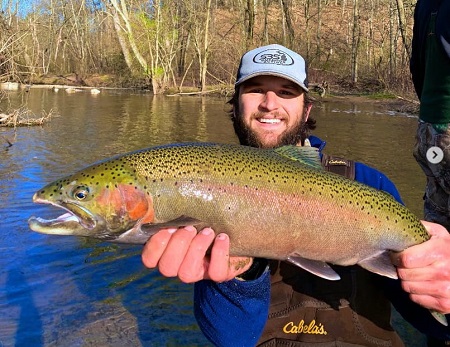
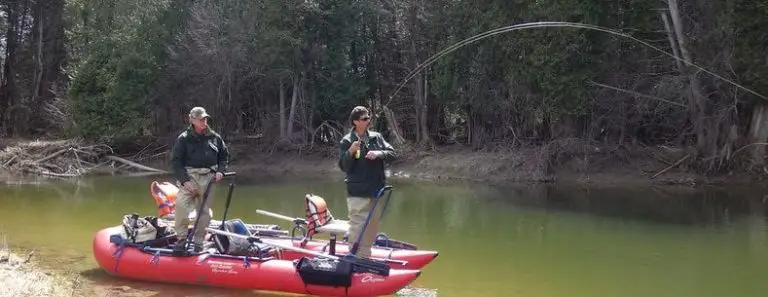
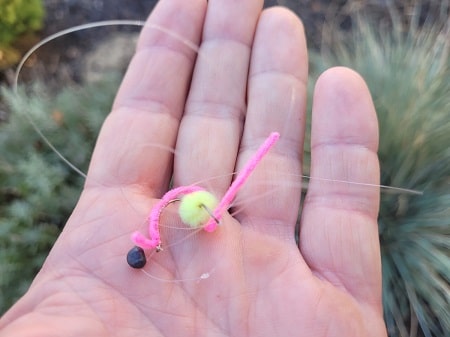
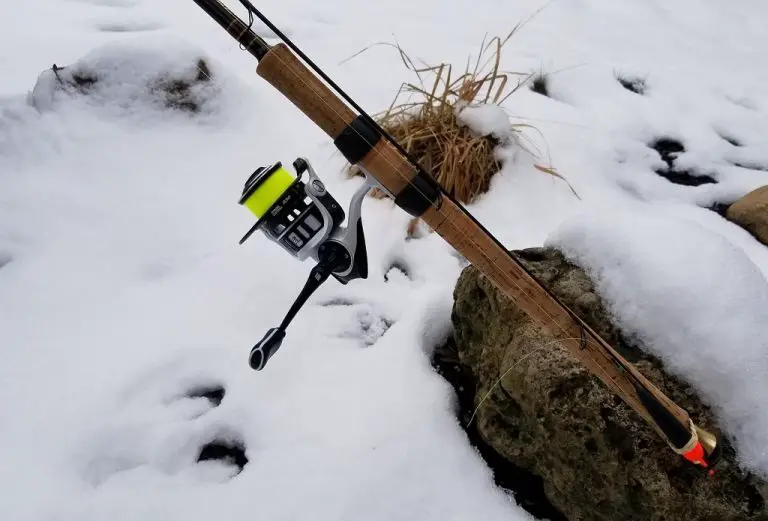
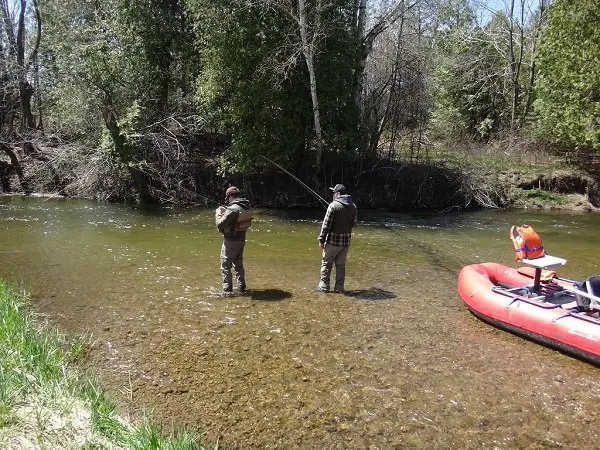
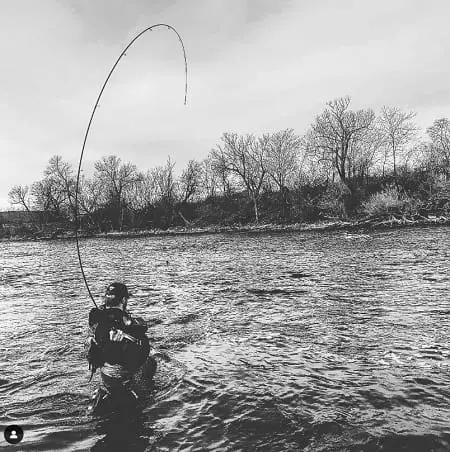
Just a comment for other anglers who want to catch more fish . You want to retreive your float at the end of a drift as fast as possible as it’s time wasted not fishing . If you retrieve your float with quick palm strikes to the bottom of the centerpin reel it will be faster than using the handles. Also don’t hold your rod tip close to the water at it will submerge your float, further slowing down your retrieve . It also makes it impossible for other anglers to see your float coming back up river . In my mind, we only have a small window of opportunity to catch fish so don’t waste it.
Hi Andrew, I agree with getting your float in fast, however, I have found that many anglers are not good with with palming method of retrieve and that it hurts some guy’s hands after a while. I show 3 types of retrieves, which includes the palming style that you mention which I call batting the reel. What I recommend is to find a retrieve that works best for you and then get good and fast at it. I don’t prefer to use the handles or the palm method to retrieve. I’ve found a faster way to do it. I’m hoping to do a video to show you how.
As far as pulling in the line high, I would add that you should pull the float up the side of the river instead of up the middle of the pool which could spook some fish.
Lastly, when I guide with 2 anglers or fish with buddies or even other anglers, I recommend that the guy at the top of the pool actually reel in with a low rod tip so the guy below him can easily cast over the low line and he won’t need to wait. This might mean you will need to use your reel handles to retrieve it instead of palming the reel in. If the guy at the top reels in with a high rod tip the guy below can’t cast over the high line easily until the line is all the way in. Lowering your tip allows the guy below to cast first and the guy above can cast next and that allows both anglers to fish more with less waiting and downtime.
Hi Graham
Excellent website and information, lots of details. Thankyou. I have been suggesting this site to various friends, who are starting centerpinning. My question, I am in my 2nd year centerpinning and have most of your suggested gear and use your leader setup but would like more details on the speed of the drift. Is there any way of telling on top of the water if your drift is correctly progressing down river, in addition to having the float slightly tilting back. I’ve heard of following bubble speed. Any help appreciated
Thanks Randy
Hi Randy, I’m glad you like the website and are passing it along to others to learn, thanks. I still have a lot more to add to it. To answer your question, unless you are fishing flat slow water, the bubbles are a poor indicator of the bottom speed. However, I tell my clients that if the bubbles are passing their float, that is a good thing, at least it’s better than their float going faster than the bubbles or at the same speed of the bubbles which are both a bad thing. Unfortunately, just because the bubbles are passing your float, it doesn’t tell you if you are still going too fast or too slow so you should not use the bubble speed. Flat slow water might have an even speed from top to bottom of the water column, however, bubbles in faster water are often much faster than the bottom current, sometimes 80% faster but you can’t tell how much faster the top current actually is. The method that I have found to be the most effective to determine the bottom speed and how fast you should be running your bait through is the angle of your float. If the current at the bottom increases in speed it will pull the bait forward and that will tilt your float back on more of an upward angle. If the current slows down more the float will want to tilt straight up more in which case you can add more pressure which will slow your bait speed. As a rule of thumb, I would prefer to be too slow than too fast.
Hey Graham,
Thanks for all the great info! I’m having an issue where when I try to slow down my drift, my float keeps moving towards me rather than staying in the line I’m aiming to fish. This happens especially when I’m trying to fish the middle or far side lines. I have a 13′ rod, and in the pool I’m thinking of in particular, I’m unable to move forward to get closer to my float because it drops down very quick and deep. Any advice how to stay in a fishing line and slow down my float without it coming towards me?
Thanks
Hi Rafael, This is a common issue, and unfortunately without taking off all the pressure on your float and allowing to drift freely and as fast as it wants, it’s hard to stop the side drift problem. Some things you can try are:
– Get further out,
– hold your rod tip further out,
– use a longer rod for more reach.
– Ensure you are not applying too much pressure or pull on the float
– Use a bigger float with more weights and sink your float deeper with the weights which will help it stay in line better.
Right now (November 2021) I’m in my busy guide season with 4 guides working and over 60 guide trips booked this month so I’m not able to get any deeper into this, but one of these days, probably in the winter when I’m slower, I can address this further and explain how I cover the spot completely even with slight-side-drift. Try those things and let me know how it goes. Good luck.
Hey Graham. Wondering if you could touch on the side drift issue further? I have been struggling with this also. Love your site! It has been a great resource for me.
Hi Jeremy,
I have recently added more info about the side drift problem HERE
Hi Graham,
Thanks for taking the time to explain all of this.. do you feather your reel the whole time you’re drifting? Or are you just feathering it when your float starts to stand up. I have constant pressure on mine and I’m just wondering if I’m taking my bait up and out of the strike zone more often than not?
Thanks in advance
In fast water, I will usually need to feather the reel the entire time, but in slower water, I will feather the reel only at the point when I see my float almost straight up, or I often use a continuous on and off feathering method that keeps the float at the preferred angle and doesn’t allow it to stand straight up. You will need to apply more or less pressure depending on the velocity of the current.
Hello Graham, I find your article very informative upto the very small details. I just want to ask you if the float fishing described here in your website can be applied to Mahseers fishes also. I am from North East India and our river fishes are mainly Mahseers. Thank you.
Unfortunately, I do not know anything about how to fish Mahseers so I can not say if float fishing would work or not.
This would explain why in a fast River like Lower Niagara I catch 10x more fish bottom bouncing than with a float.. I’ve been trying to figure out why and I think it’s because my bait is moving too fast and/or not staying down long enough 🤔 would love to figure it out though , bottom bouncing can get a little tedious
Hello, Graham.
I’m assuming that when you say, “When controlling your speed, do not hold the float back with your rod tip… use your fingers on the line instead” (for spinning reels), you mean with your bail open?
Thanks.
Hey Steve,
Yes, leave the bail open and let the line slide through your fingers to control the speed.
Graham
Hello, Graham.
I’ve been reading your articles, which are great by the way, but then I read the following:
If your float keeps getting tilted downriver you are either dragging the bottom or you are not holding your float back enough to match the bottom current speed, both of these are a problem that will prevent you from catching fish.”
This seems to contradict your directions about how to find the bottom in the streams people fish. If the float is tilting downriver, how does someone know if they are hitting bottom or if he’s just not holding his float back enough? Seems confusing.
Thanks,
Steve
Hey Steve,
It is confusing and hard to explain. It’s difficult to detect the bottom, especially when fishing fine gravel bottom or sandy/muddy bottoms where your weight or jig won’t catch the bottom and cause twitching at the float. I hope to have a video on how to do this coming in spring 2023.
What might help you is this. If the float tilts hard or fast it’s likely dragging bottom. Fast means that if you pull or hold the float back for a couple of seconds and then release and it tilts downriver hard and fast which usually indicates that you’re probably dragging bottom.
If it’s a subtle or slow tilt, it’s likely not hitting bottom and is dragging due to current in which case you are not holding the float back enough.
When I’m not sure if its’ bottom or not, I will continue to make my leader deeper and will often add extra weight close to the bait. Often using the bait to detect the bottom isn’t ideal especially if it’s a light bait like a plastic worm because it doesn’t drag hard. But, if I keep making the leader deeper, I’m actually trying to purposely drag the weight, not the bait since once the weight hits the bottom it should drag hard and fast which lets me know I found bottom. At this point I will look at how much leader is between my bottom weight and the bait and then pull the float down to shorten the leader by 6 to 12 inches more than that leader’s length. This usually works for me.
It’s not an exact science but it’s the most effective method I have found.
I hope that clears it up enough until I get a video for this.
Graham
hi Graham, great info in here. do u offer an online video class? would love to see you in a classroom setting, setting up a whole rig. or even watching you fish on a stream watching how u control your float and watching u trot your line.
Thanks again
Hey Brendon,
I’m currently filming some video content. I hope to have it posted on this website and on youtube in early 2024. Stay-tuned….
Graham
Graham. Not to be super weird, lol. But the address here is for WV and aperfectdrift.com seems to be Ontario, Canada based. ATM I am in Olcott NY, but I live in Pittsburgh, PA. I guess my question is are you a Canadian or a Mountaineer? I used all my tricks and powers on the stream today and came up empty. Big Browns at Burt damn right now. Never seen it like this in almost 40 years in October. Thank you for all the content you produce. Just found your site.
Hey David,
My LLC is USA based, I’m no longer the owner or affiliated with A Perfect Drift, my focus is now bringing great content to both USA and Canadian anglers, so I’m glad you like the website and find it helpful. I and many of my buddies would go to OLcott for browns at this time of year, it can be fantastic at times.
Best of luck,
Graham
Hi Graham,
Your dedication to putting all of your 30 plus years of knowledge onto your website is truly amazing and just wanted to let you know that this has really helped me get better at centerpin fishing and really get to understand the “science” behind drift float fishing. I really appreciate the information here.
Just a quick question, what is the best and effective way to ensure that you are trotting perfectly in rapids? I always try in flat water, for example, to be perfectly flush so the bait is sitting vertically. For the rapids, is it just a simple tilt by holding the rim of the centerpin showing just the side of the bobber to know if the bait is in the perfect spot? Not sure if this makes any sense or not.
Also, I use your effective steelhead setup with a shot line and leader. Is it safe to put an extra weight on the actual leader when using a fly or plastic worm or a roe bag to get the bait more into the strike zone or just let it present itself naturally?
Hi Gianluca,
I’m glad to hear that you are enjoying the website. You are correct, For the rapids, a simple tilt by holding the rim of the centerpin”. If the float tilts to much towards you release some tension, this means the bait is being pulled out from under the float by the current, if the float stands up straight slightly increase the tension.
I hope to have some videos of this soon.
Good Luck
Graham
Hi Graham, thanks for all the helpful info in your posts.
You touched on this in your Indicator Nymphing post but I was wondering if you could elaborate more on the technique used for float speed control when indicator nymphing for steelhead. Is the float angle and speed controlled primarily by mending or do you slow the rate of line being fed to the drift to hold back the float? When feeding line to the drift how do you do that in a restrictive yet smooth way that does not make the presentation look unnatural? I’m currently using Oros indicators but after reading your post about best strike indicators have ordered some of the Raven FS floats.
Hopefully that makes sense. Thanks in advance for any insight.
Hey Brandon,
It’s a lot harder to control the speed of your indicator or float when using a fly line. I use two methods, I high stick nymph keeping the fly line and leader up and off the water and will hold the float back using the rod tip. This works best in short runs.
The other method is to shoot mend or stack mend the fly line directly above the indicator/float, this method is better for long drifts. It’s hard to explain, but, the extra drag with your line above the indicator will slow the indicator/float down. once I have plenty of line above my float, I will use my high rod tip to pull/hesitant/slow the drifting fly line. This works for me and I can 60-70 foot drifts with good control. I hope to have a video on how to do this, my video should be ready in the new year.
You can sort of see it done on this video, however, not done well, but the idea is there. Just practice putting more and more line upriver of the indicator/float without bouncing your indicator all around. https://youtu.be/A5ca0SsGNsQ?si=2x-dnZzA5-DbgklR
FYI, Your Oros indicators will be good in slow and flat water.
Also, see my article, Speed Control When Nymphing – https://troutandsteelhead.net/dead-drift-nymphing-speed/
Hope that helps,
Graham
Hi Graham what’s the best way for controlling you speed in frog water and which float is best for frog water as well?
Hi Graham would the fm raven float work in frog water better than ss float and for controlling your speed in frogwater do you just let the float drift straight up and down without trotting since the water is really slow?
Hey George,
I use the FM is all water types. I just like the shape. and I do not trot or hold back the float in frog water.
Graham
Hello Graham,
Thanks a lot for all the professional and helpful content, you ARE ACTUALLY A TOP GUIDE/FISHERMAN.
Question: Personally, I feel like the advanced bottom bouncing method and float fishing both have their advantages so sometimes hard to decide when to use which method. You mentioned that for smaller and faster waters you would use bottom bouncing, is it always the preferred method?
For example, creeks like Wilmot tend to be smaller and faster, and bottom bouncing can get the bait down in the strike zone faster so does this mean in this scenario bottom bouncing is more effective than float fishing? Also, when there is no float, will that decrease the pressure on the fish?
Looking forward to your answer, and we truly appreciate your generosity in sharing all these super high-value experiences.
Best,
Chris
Hi Chris,
You can still fish small rivers with a float as long as the float is not spooking the fish. When I say faster I mean like rapid water, not pools.
If its shallow water, I prefer to bottom bounce so the fish do not see the float.
Graham
“some guys trot so much that the bait is sometimes 5 to 10 feet ahead of the bait:”
What, exactly, does this mean? How can “the bait” be ahead of “the bait”?
typo.. “bait before float” I Fixed it, thanks for pointing that out.